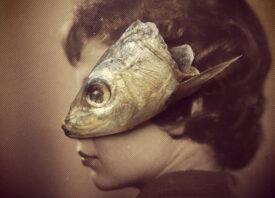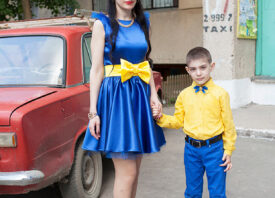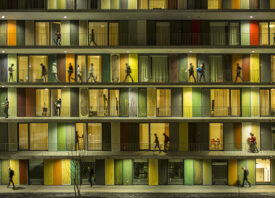Search this site
Photos of Bosnia’s Seemingly Peaceful Countryside Littered with Land Mines
Photographs are complicated landscapes. Oftentimes they present the unknown, even if the subject matter is recognizable by name or shape. What lies behind the faces we don’t really know, the trees we can’t see through and the mountains we can’t climb over is forever an unknown when looking at a scene on paper or on a screen. Brett Van Ort’s landscapes are majestic indeed but enlaced with an overwhelming sense of tragedy.
In his series Minescape, rich landscapes are mixed with photographs of prosthetic limbs and various explosive devices such as the land mines that still litter much of Bosnia’s countryside. Reinforced by the nuance of the medium, these photographs remind us that the consequences of war are long lasting and that looking hard enough at a violent history is unfortunately, rarely rewarding. We asked the Los Angeles based photographer more about the project.
This work makes a huge statement without employing a single portrait. What was your intent when you first set out to create images? Why did you choose this subject matter?
“Initially I wanted to explore inaccessible landscapes. In considering this, I came to the idea of mined landscapes and I began researching the many areas of the earth that suffer from this problem. I selected Bosnia because I felt the mountains and forest of Bosnia provided a stronger correlation to Western viewers than say, a desert landscape in Iraq, Afghanistan or Angola, or a jungle landscape in Cambodia. Bosnia reminded me very much of the Sierra Nevada range in America.
“Once I began working on the project I found the land mines to be as important to the series as the landscapes. The price to produce mines is incredibly low and that exacerbates the magnitude of the problem. One mine can cost as little as $3, while it can cost over $1000 to clear one square meter of land. Also, the price to produce the prosthetics—$3000 and up—is mind boggling when you consider cost of the mines. Most survivors of mine incidents are from rural or agrarian cultures; in considering this, the cost involved to find a decent prosthetic is even greater and the victim’s ability to generate income is then severely hampered. I felt all of these factors are something a portrait of a land mine survivor doesn’t implicitly tell us.
“Finally, in looking at other work that had land mines or minefields at its core, the survivor of a mine incident is usually the resulting image we have. I felt the best way to translate the problem of over 3% of Bosnia being a minefield, was to try and immerse the viewer in the landscape. I feel I’ve done my job when people say, ‘That looks like where I walk my dog on Sunday,’ or ‘That looks just like where I went camping this summer.’”
The work also concerns itself with ‘the unknown.’ What did you find out about yourself via this project?
“The project obviously informed me of issues I wasn’t aware of prior to undertaking it. The fact that there are anywhere between 80 and 100 million mines in the earth waiting to explode is something I feel everyone should know. Also, the fact that the United States still has yet to ratify or sign the Ottawa treaty which bans the use, stockpile, and production of mines, is something I’ve found really frustrating and upsets me every time I think about it.
“Lastly, ever since completing this project, I’ve gone on several backpacking trips here in the United States and I always find myself thinking about how lucky I am to be able to not have a concern about where I step. As a consequence of completing this project, the inherent fear of nature that I allude to in the work, is certainly there for me when I go backpacking now. That is a feeling I wasn’t expecting prior to undertaking the project.”
Minescape is currently available through Daylight Books here.
This post was contributed by photographer Sahara Borja.














